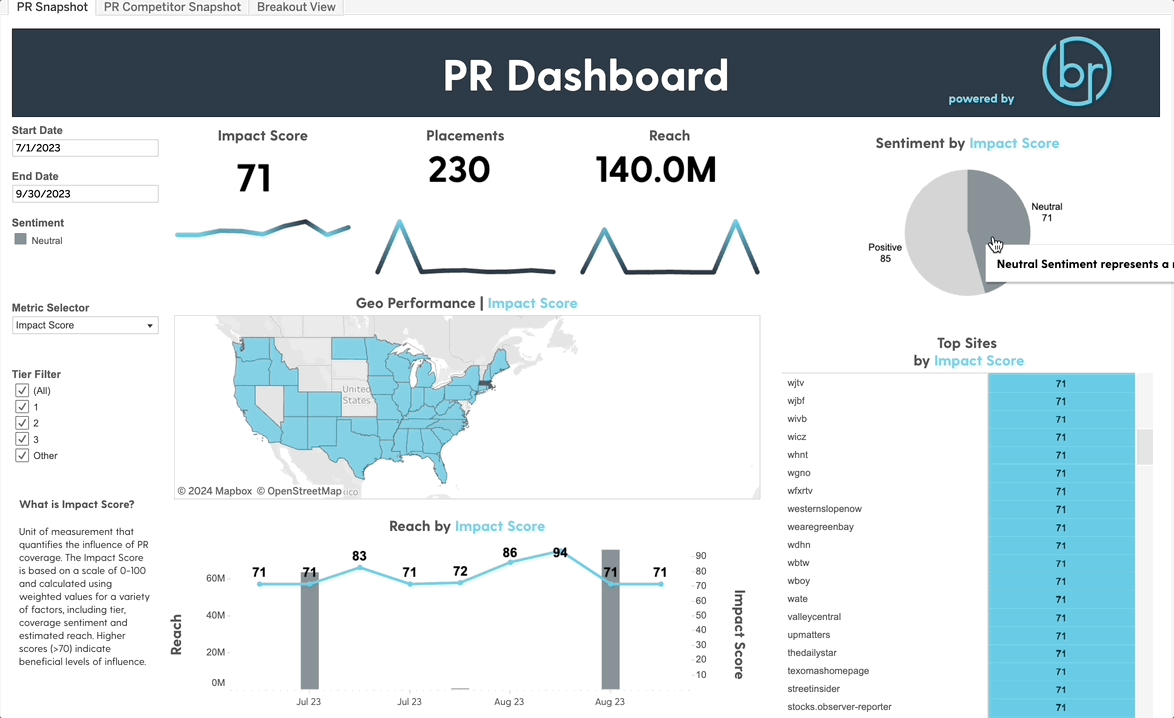News
Public Relations With a Dollop of Data
Improving ROI with data-driven PR.
While relationships with media, customers and subject matter experts remain critical to the magic of media coverage, telling the right story at the right time, and framing it up in an engaging way that captures attention in a busy, fast-paced world influences how a PR pitch will land.
So, what if we could find a formula to generate the most impact for every PR program? What if we could fine-tune our pitches to improve the probability that they’ll generate not only results but the right results to support a client’s business? And what if we could better understand the impact of our earned results?
That’s the role of data. Intuition, creativity and a PR pro’s experience will always be crucial to killer media relations. But leveraging data intelligently enables us to identify patterns, verify results and construct test-and-learn scenarios even more nimbly.
Our new Bader Rutter PR Dashboard does just that.

Quantify the quality and impact
Media coverage – basically, the editorial articles PR secures that feature a specific topic – are typically evaluated based on reach or impressions, and maybe the paid media equivalent for the space. But today, we can leverage many more assessment metrics.
By reviewing our data through the lenses of the subject matter, themes, sentiment, geography and even competitive insight comparisons, we start to identify patterns. We then determine which content editors are covering most and evaluate whether we’re getting the right topics published in front of the right audiences. With data, we can find opportunities to adjust our pitch angles to dominate the gray space.
Align with strategy
Does your PR ladder up to your business goals? By examining whether and how top target publications are covering our stories, we can assess our reach to critical target audiences. We can also ensure the story angles in those publications align with topics that support the business strategy. Data-driven metrics provide far richer assessments of whether we’re creating influence where and when we intended.
Identify more effective approaches
Over time, we can review patterns in the data to reveal any unexpected dips or peaks in coverage. We can then identify the cause of those changes and determine if we should make strategic shifts to avoid dips or capitalize on what’s working.
In a better-case scenario, we can review PR program results alongside social metrics, web data, ad campaign performance and search analysis. Whole-picture data like this provides a more robust review of brand impact and helps us continually identify real engagements and media coverage. These snapshots can also be sorted and shared through different contexts for different company stakeholders; enabling us to tailor our reporting to more diverse organizational priorities than just brand awareness.